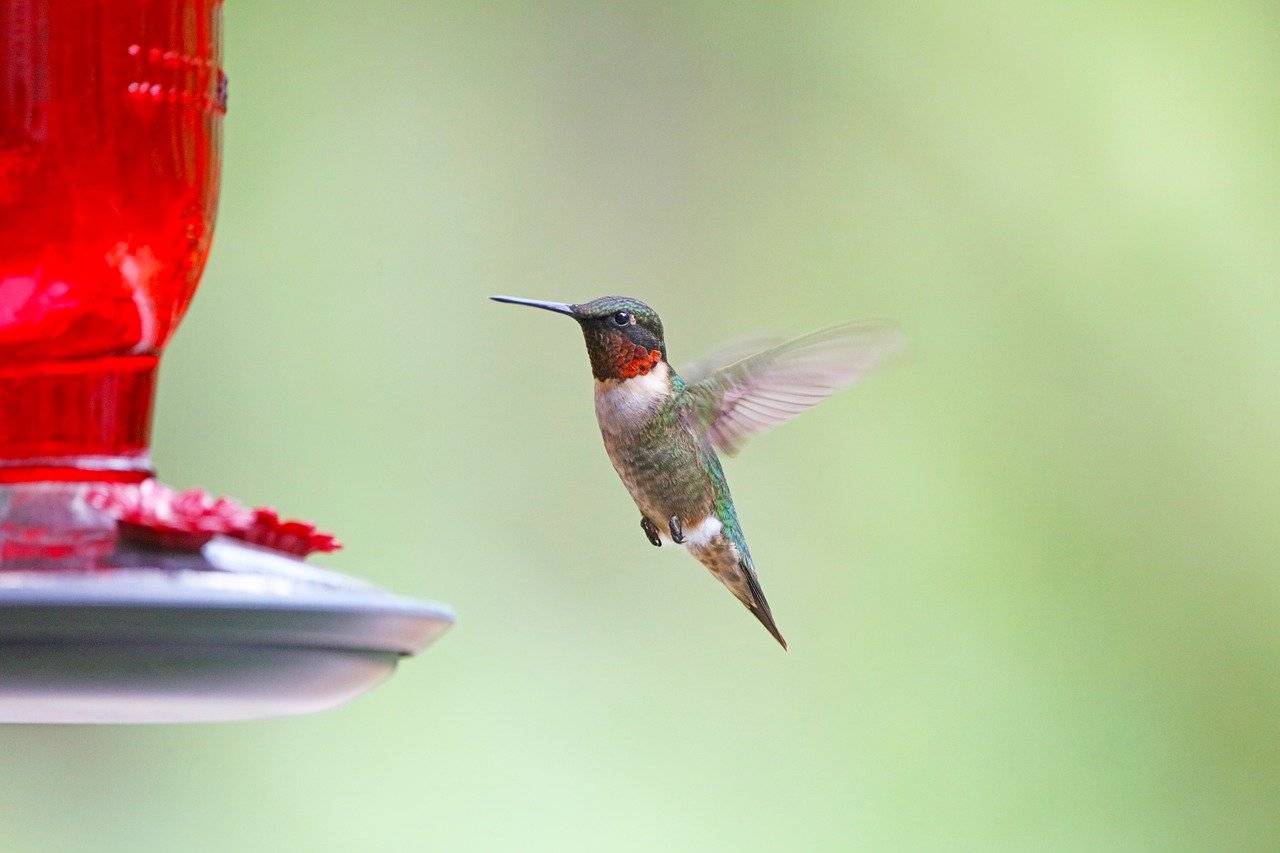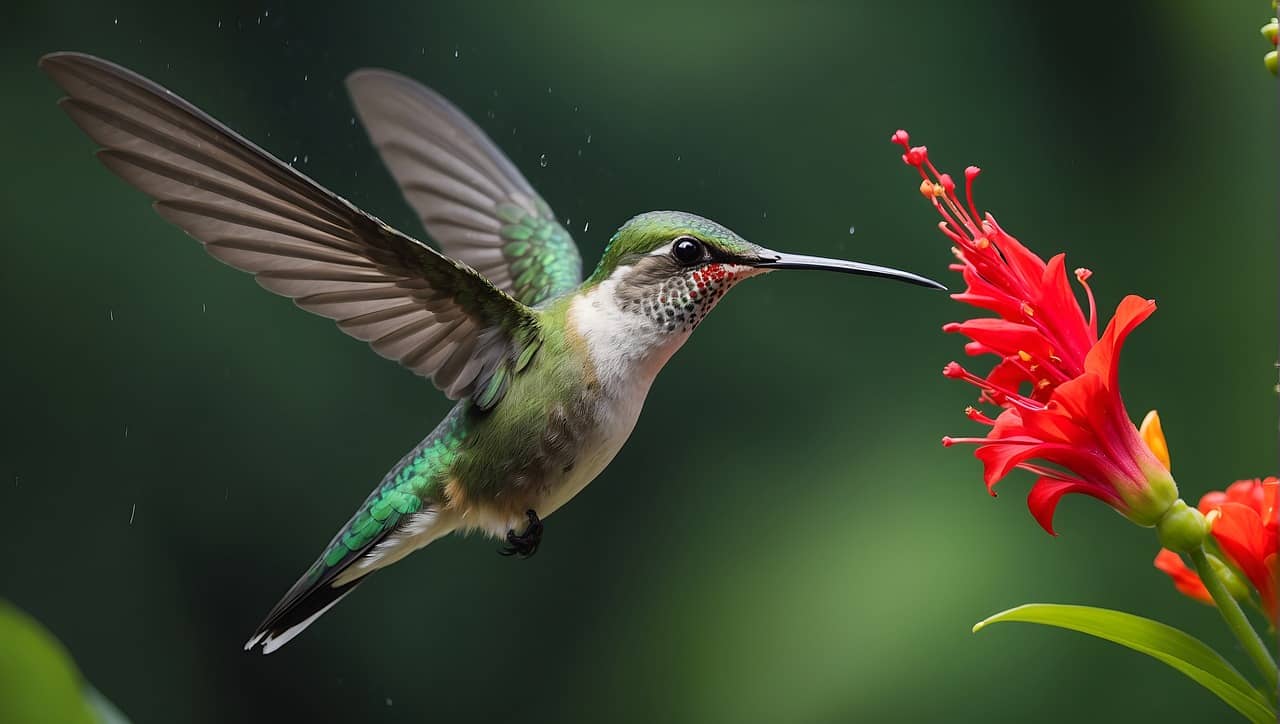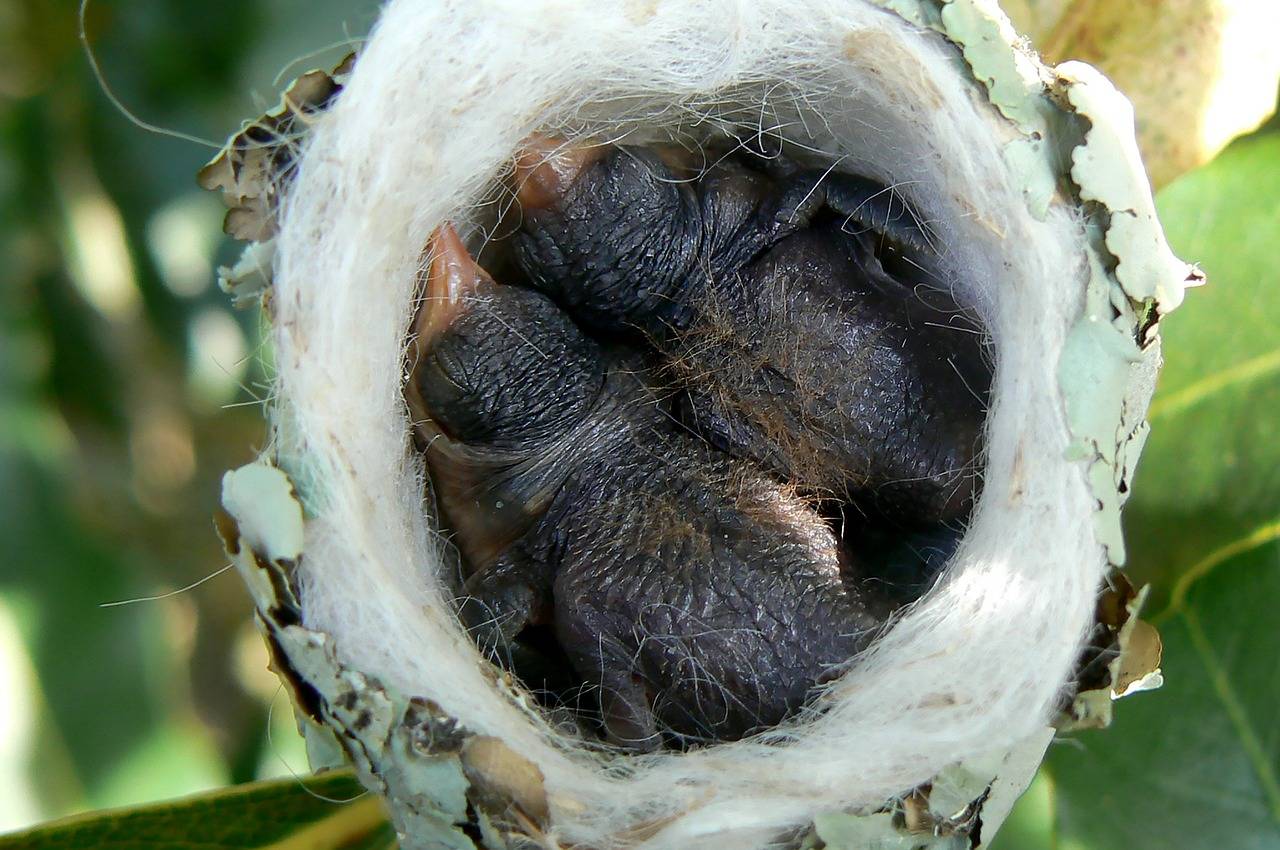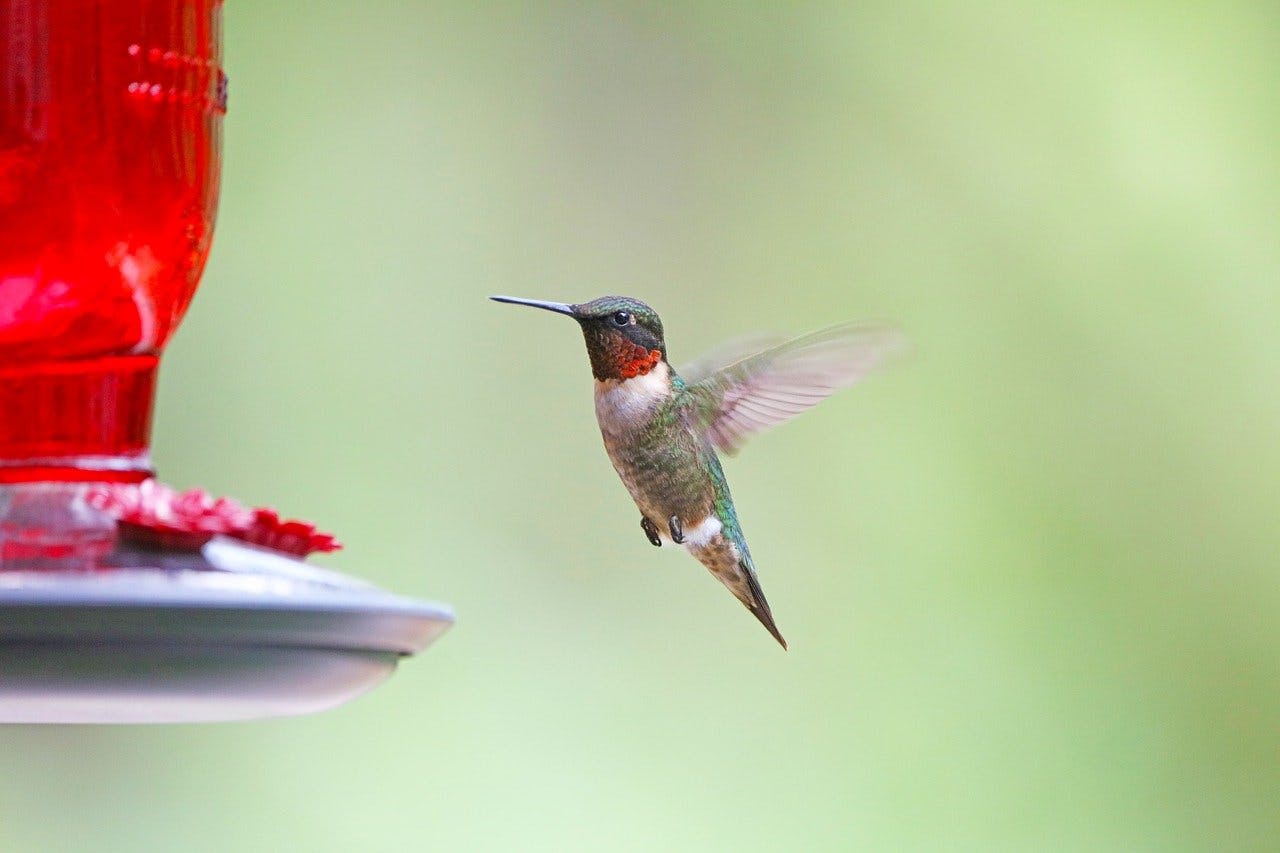Why do we like hummingbirds?
People enjoy watching hummingbirds for a variety of reasons, each stemming from the unique and captivating characteristics of these tiny birds. Firstly, their aerial acrobatics are mesmerizing to behold; hummingbirds can hover in mid-air, fly backwards, and dart about with incredible agility, showcasing a level of flight mastery unparalleled in the avian world. Their vibrant plumage, often shimmering with iridescent hues, adds to their visual appeal, making them a delight to observe up close. Furthermore, the sheer speed at which they flap their wings—up to 80 times per second—makes them fascinating subjects for study and admiration. Beyond their physical prowess, the role hummingbirds play in pollination and ecosystem health underscores their importance, offering viewers a deeper appreciation for the interconnectedness of nature. Lastly, the sense of tranquility and connection to the natural world that comes from watching these delicate creatures flit about in the garden or at a feeder provides a peaceful respite from the hustle and bustle of daily life, fostering a sense of wonder and harmony with the environment.
 Ruby-Throated Hummingbird Ruby-Throated Hummingbird |
When can I see hummingbirds in my backyard?
In spring, hummingbirds typically migrate back to Pennsylvania from their wintering grounds in Central America and southern Mexico. The timing of their migration can vary slightly depending on factors such as weather conditions and the availability of food along their route. Generally, Ruby-throated Hummingbirds, the most common species in Pennsylvania, start their northward migration in late February to early March. As they travel north, they follow the blooming of flowers and the emergence of insects, which serve as their primary sources of food. By late April to early May, most Ruby-throated Hummingbirds have arrived in Pennsylvania, ready to breed and raise their young during the summer months. During migration, these tiny birds cover impressive distances, often traveling thousands of miles to reach their breeding grounds, making their annual journey a remarkable feat of endurance and navigation.
Tips for attracting hummingbirds
Attracting hummingbirds to your backyard can be a rewarding experience. Here are some quick tips to help you prepare your backyard for the arrival of hummingbirds this spring.
- Plant Hummingbird-Friendly Flowers: Choose nectar-rich flowers with tubular shapes and bright colors, such as trumpet vines, bee balm, salvia, columbine, and fuchsia. These flowers provide the nectar that hummingbirds love and are essential for attracting them to your yard.
- Install Hummingbird Feeders: Place hummingbird feeders strategically around your backyard, preferably in areas with some shade and away from potential threats like predators. Keep the feeders clean and filled with fresh nectar (1 part white sugar to 4 parts water). Avoid using honey, artificial sweeteners, or red food coloring.
- Provide Perches: Hummingbirds need places to rest and survey their surroundings between feeding flights. Consider adding perches near your feeders, such as small branches or decorative sticks, to give them a place to perch and observe.
- Create a Water Feature: Install a shallow water source, such as a birdbath with a mister or dripper, for hummingbirds to drink from and bathe in. Make sure to keep the water clean and fresh, and consider adding some rocks or pebbles for perching.
- Add Red Accents: While hummingbirds are attracted to a variety of flower colors, they are particularly drawn to the color red. Incorporate red accents into your yard, such as red flowers, decorative red objects, or even red ribbons near your feeders, to catch their attention.
- Provide Shelter: Hummingbirds need shelter to rest and escape from predators. Planting trees, shrubs, and other vegetation around your yard can provide cover and nesting sites for hummingbirds.
- Minimize Pesticide Use: Avoid using pesticides and herbicides in your yard, as they can be harmful to hummingbirds and other wildlife. Opt for natural pest control methods and organic gardening practices instead.
By implementing these ideas, you can create an inviting habitat that will attract hummingbirds to your backyard, providing you with the opportunity to observe and enjoy these fascinating creatures up close.
Putting up a hummingbird feeder
Setting up a hummingbird feeder can be a delightful experience! Here are some tips to ensure you attract these beautiful birds:
- Location, Location, Location: Place your feeder in a spot that’s easily visible to you, preferably near a window where you can enjoy watching the hummingbirds. Also, choose a location that offers some protection from strong winds.
- Shade: While hummingbirds love sunlight, too much direct sunlight on the feeder can cause the nectar to spoil quickly. Opt for a spot that receives some shade during the hottest parts of the day.
- Safety First: Ensure the feeder is placed away from areas where predators, like cats, might lurk. This gives hummingbirds a sense of safety when they come to feed.
- Easy Access: Hang your feeder at eye level or slightly higher for easy access and observation. Hummingbirds prefer feeders that are elevated, making it easier for them to spot.
- Proper Cleaning: Regular cleaning is crucial to keep your feeder hygienic and safe for hummingbirds. Clean the feeder thoroughly with hot water and a mild detergent every time you refill it, and rinse it well to remove all soap residue.
- Fresh Nectar: Change the nectar every 2-3 days, especially in warm weather, to prevent fermentation and the growth of harmful bacteria and mold. Hummingbirds are attracted to fresh nectar, so keeping it clean and replenished will encourage their return.
- Mixing Nectar: You can make your own nectar by mixing one part white granulated sugar with four parts water. Boil the water to dissolve the sugar, then let it cool before filling the feeder. Avoid using honey, artificial sweeteners, or red food coloring, as these can be harmful to hummingbirds.
- No Pesticides: Refrain from using pesticides or herbicides near your feeder, as they can be toxic to hummingbirds and other wildlife.
- Multiple Feeders: If you have a large garden or yard, consider installing multiple feeders to accommodate more hummingbirds and reduce competition for food.
- Be Patient: It may take some time for hummingbirds to discover your feeder, so be patient and keep it well-maintained. Once they find it, you’ll be rewarded with frequent visits from these fascinating birds!
By following these tips, you’ll create an inviting environment for hummingbirds and enjoy the beauty they bring to your backyard.
Recommended Hummingbird Feeders
These are several hummingbird feeders we recommend:
Set of 2 10oz plastic hummingbird feeders with built-in and guards. Includes 5 feeding perches. Price $17.99 Click Here to Purchase
LujiiGarden hand glass blown hummingbird feeder. Holds 32 oz and included 5 feeding perches. Price: $28.89 Click Here to Purchase
Aspects HummZinger HighView 12 Oz Hanging Hummingbird Feeder with 4 feeding perches. Price: $24.15 Click Here to Purchase
Why are hummingbirds attracted to the color red?
 Hummingbirds are often attracted to red colored flowers Hummingbirds are often attracted to red colored flowers |
Hummingbirds are attracted to the color red due to a combination of evolutionary factors and sensory preferences. Many of the flowers that hummingbirds feed on, such as trumpet vines and red tubular flowers, tend to be red or have red markings. Over time, hummingbirds have evolved to associate the color red with a potential food source rich in nectar, their main energy source. With their exceptional color vision, particularly sensitive to red hues, hummingbirds can easily spot red flowers amidst green foliage. This high contrast makes red flowers stand out prominently, increasing their visibility to hummingbirds as they forage for food. Additionally, the color red may act as a signal of a desirable food source, triggering competitive behavior among hummingbirds, which are territorial and often vie for access to the most abundant nectar. Overall, the color red serves as a beacon, guiding hummingbirds to their preferred food sources and facilitating the crucial pollination process in their ecosystems.
How to make hummingbird nectar
Here’s a simple recipe for making your own hummingbird nectar:
Ingredients:
- 1 part white granulated sugar
- 4 parts water
Instructions:
- Bring the water to a boil in a saucepan.
- Once boiling, add the sugar to the water.
- Stir until the sugar is completely dissolved.
- Remove the saucepan from the heat and allow the nectar to cool to room temperature.
- Once cooled, pour the nectar into your hummingbird feeder.
- Any remaining nectar can be stored in the refrigerator for up to one week.
Remember to never use honey, artificial sweeteners, or red food coloring in your hummingbird nectar, as these can be harmful to the birds. Stick to plain white sugar and water for a safe and nutritious nectar solution.
Nesting facts about the ruby-throated hummingbird
Ruby-throated hummingbirds are fascinating creatures with unique nesting habits. Here are some nesting facts about these tiny birds:
- Nesting Season: Ruby-throated hummingbirds typically breed in the eastern United States and parts of Canada. Their nesting season usually begins in late spring or early summer, coinciding with the availability of insects and nectar-rich flowers for feeding their young. In warmer southern regions, nesting may begin as early as March or April.
- Nest Construction: Female ruby-throated hummingbirds are solely responsible for building the nest. They construct their nests using a variety of materials, including plant fibers, moss, spider silk, and bits of lichen. These materials are meticulously woven together and bound with spider silk to create a small cup-shaped nest that stretches as the chicks grow.
- Nest Placement: Ruby-throated hummingbird nests are typically situated in sheltered locations, often high up in the branches of trees or shrubs. They may also choose less conventional locations, such as on porch lights, clotheslines, or wire fences. The female selects the nest site and builds the nest, usually incorporating camouflage to help conceal it from predators.
- Nest Size: Despite their diminutive size, ruby-throated hummingbird nests are remarkably small. They are roughly the size of a walnut shell, measuring only about 1.5 inches in diameter. The nest’s size allows it to blend in seamlessly with its surroundings and provides a snug fit for the growing chicks.
- Egg Laying and Incubation: After completing the nest, the female lays one to three eggs, usually about the size of small peas. She incubates the eggs for approximately 12-16 days, rarely leaving the nest except to briefly feed and stretch her wings. The male plays no role in incubating the eggs but may occasionally bring food to the female.
- Chick Development: Once the eggs hatch, the female continues to care for the chicks alone. The chicks are born blind and featherless, relying entirely on their mother for warmth and nourishment. The female feeds them a diet of regurgitated nectar and small insects, visiting the nest frequently throughout the day to ensure they receive enough food.
- Fledging: After about three weeks, the chicks begin to develop feathers and grow rapidly. Once they are fully feathered and capable of flight, they leave the nest, a process known as fledging. The mother continues to feed and care for the fledglings for a short time after they leave the nest, teaching them essential skills such as foraging and avoiding predators.
Overall, the nesting behavior of ruby-throated hummingbirds showcases their remarkable adaptability and resourcefulness in raising their young in the wild. Their tiny nests and dedicated maternal care contribute to the ongoing success of this iconic species.
 |
Finding a ruby-throated hummingbird nest can be a challenging but rewarding endeavor. One effective method is to observe the behavior of the female hummingbird. During the nesting season, the female will frequently visit and depart from the nest to forage for food and incubate her eggs. By carefully watching her flight patterns and observing where she goes after leaving a particular area, you may be able to track her back to the nest site. Additionally, listening for the distinctive buzzing sound of a hummingbird’s wings can help alert you to their presence nearby. Once you’ve located a potential nest site, look for small cup-shaped structures nestled within the branches of trees or shrubs, often camouflaged with lichen or moss. Take care to approach the nest site quietly and cautiously to avoid disturbing the birds or drawing attention to the nest from potential predators. Remember to maintain a respectful distance and avoid prolonged observation to minimize stress on the nesting birds.
|
|




Hi my family member I want to say that this post is awesome nice written and come with approximately all significant infos I would like to peer extra posts like this